Georgios Panagopoulos MD | Orthopaedic Surgeon
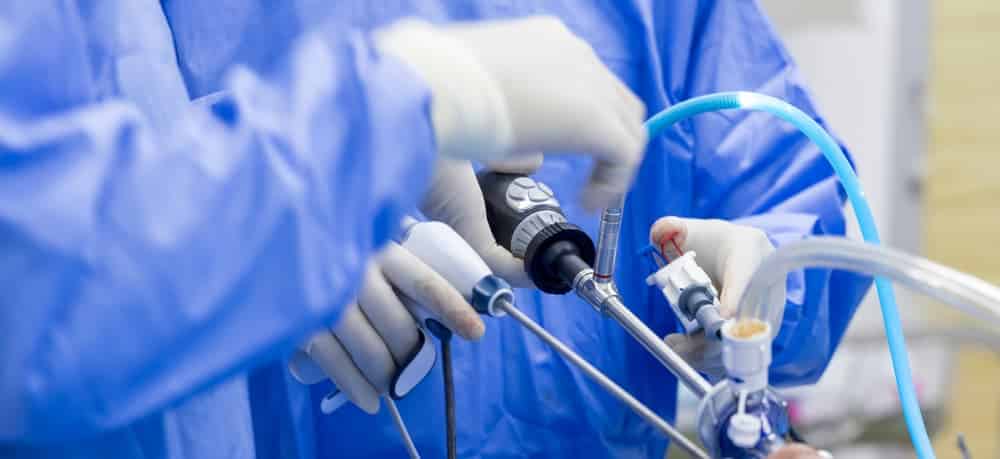
Shoulder arthroscopy is a minimally invasive procedure that allows inspection of the shoulder joint with a camera and subsequent diagnosis & treatment of the majority of issues around the shoulder. Most shoulder conditions can be treated nowadays arthroscopically. Advantages include smaller incisions, greater accuracy and quicker recovery.
Table of contents
What is shoulder arthroscopy?
Shoulder arthroscopy is a minimally invasive surgical procedure that uses a tiny camera called an arthroscope to examine or repair the tissues inside or around your shoulder. The arthroscope is inserted through a small incision in your skin. This camera projects pictures of your shoulder joint to a video screen. Your surgeon looks at the images to find the source of your injury. One or two further small incisions are made to insert instruments in order to address/repair the pathology inside your shoulder. Each incision is about the size of a keyhole (4mm). You might have arthroscopy for rotator cuff tears, shoulder impingement or shoulder instability (dislocated shoulder). Minimally invasive procedures require smaller incisions than traditional surgery. They allow the surgeon to address more accurately any pathology encountered. They allow for faster healing, shorter hospital stay and less postoperative pain.
Shoulder Anatomy
The shoulder is the most complex & mobile joint of the human body. It consists of 3 bones: the scapula, the humerus, and the clavicle. The most important structures of the shoulder include:
- Rotator cuff: consists of 4 tendons, the supraspinatus, infraspinatus, subscapularis and teres minor. The cuff initiates shoulder movement and stabilizes the joint.
- Labrum: it is the connective tissue that confers stability to the shoulder joint. It surrounds the glenoid and it's the structure that gets injured when the shoulder dislocates. It is, in all effects, the bumper of the shoulder.
- Cartilage: the articular surface is covered by cartilage, that allows the humeral head to slide on the glenoid with no friction. The cartilage wears off in patients with shoulder arthritis.
- Acromion: a bony process of the scapula that overlies the rotator cuff.
- Subacromial bursa: interposed between the rotator cuff and the acromion. Produces fluid and allows the cuff to slide freely during shoulder movements.
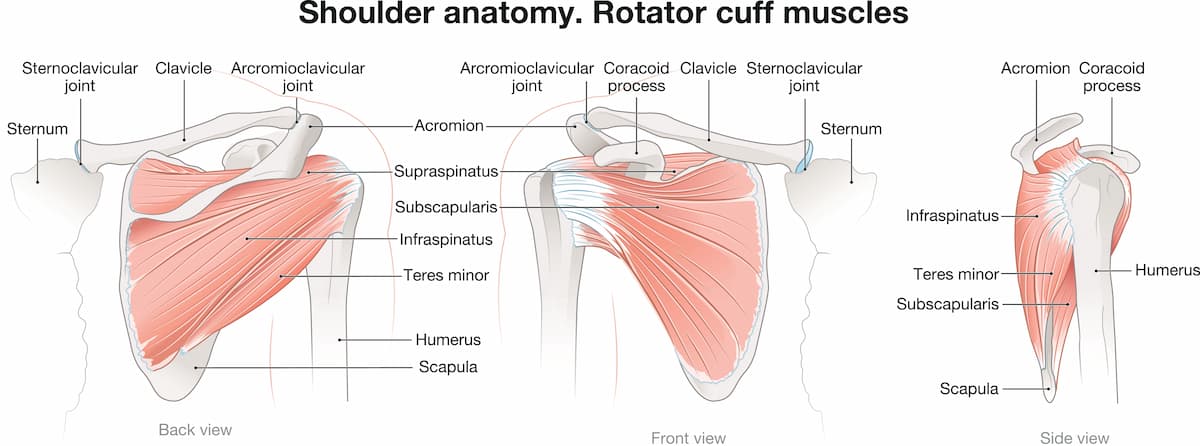
What shoulder problems are treated with shoulder arthroscopy?
Shoulder arthroscopy can treat problems such as:
- Tendonitis/impingement syndrome
- Rotator cuff tears
- Calcific Tendonitis
- Frozen Shoulder
- Shoulder instability
- Biceps pathology - SLAP tears
- Early osteoarthritis
- Acromioclavicular joint pathology
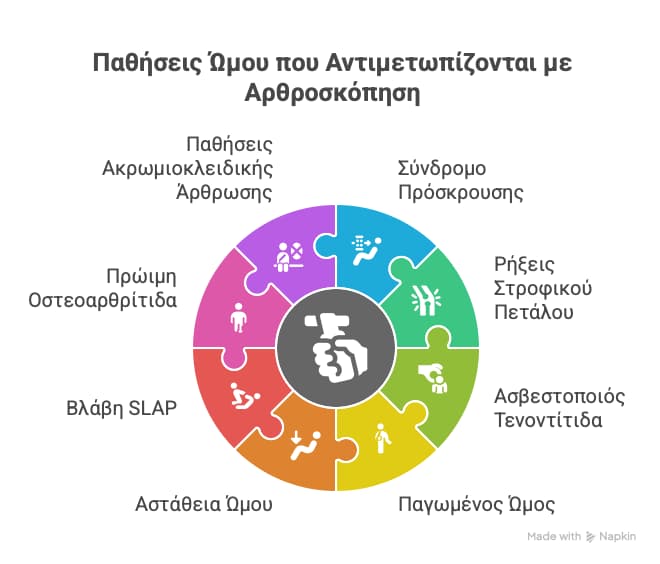
What happens before the procedure?
Before knee arthroscopy, you will typically undergo preoperative assessment. You will be asked about your health history in detail. You will be asked to bring along a full list of your medications. You may need to stop taking some of your medications a few days before surgery (especially blood thinners). Before the procedure, you may also need blood tests, a chest x-ray or an ECG (electrocardiogram), to make sure it’s safe to proceed with surgery. The anaesthetist will give you specific preoperative instructions, including how long before surgery to stop eating and drinking.
Admission to hospital - Anaesthesia
Almost all of the arthroscopic procedures that Dr. Panagopoulos performs are done under general anesthesia +/- regional nerve block on an outpatient basis. Since muscles and tendons are not cut during a shoulder scope, there is less postoperative pain, and the patient is able to recover faster. You may opt to go home the same day or stay overnight in the hospital, if you wish.
What happens during shoulder arthroscopy?
Shoulder arthroscopy may last from 20 minutes to 2 hours, depending on the complexity of the case. During shoulder arthroscopy you may be in a semi-seated position (beach-chair position) or lying on your side (lateral position). Your skin will be cleaned with an antiseptic solution. The surgeon will make a small incision (4mm) in the back of your shoulder and insert a small camera, called arthroscope, which will project images of your shoulder in a video screen.
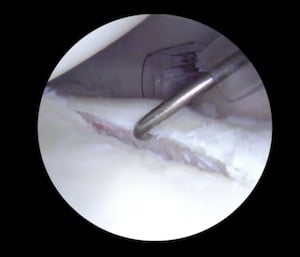
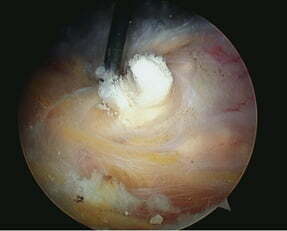
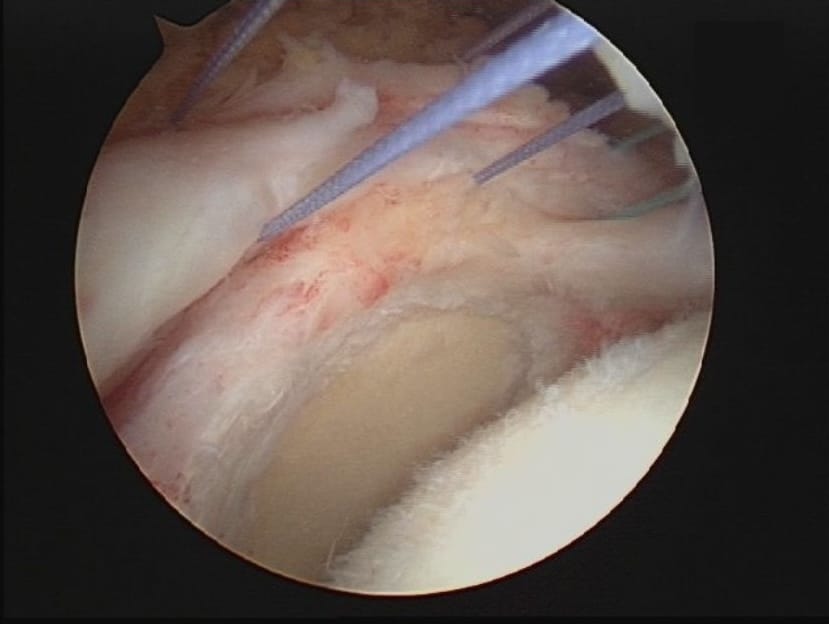
The arthroscope is essentially a slim telescope (4.5mm or 2.9mm) with a high-definition camera, surrounded by a fiber-optic tube that functions as a light source. In order to see inside the joint and to undertake any procedures, the joint needs to be ‘opened’ up. This is done by distending the joint with normal saline fluid. A specialized pump is used to control the pressure and rate of fluid going into the joint, to optimize visualization. The surgeon will make small incisions in the front and side of your shoulder to insert tiny instruments in order to address all pathology found. Multiple arthroscopic instruments may be used during the procedure. These include probes, graspers, punches, rasps, elevators and suture cutters. Power instruments, such as shaver and burrs, or radiofrequency probes may also be used. Small implants may be used during the procedure. Suture-anchors are the most common implant used during arthroscopic shoulder surgery. A suture-anchor is essentially a small screw made usually out of biocomposite material, loaded with sutures through a small eyelet. The anchor is placed flash with the bone and the suture is threaded through the tissue to repair. This allows the damaged tissue to be repaired to its anatomical position.
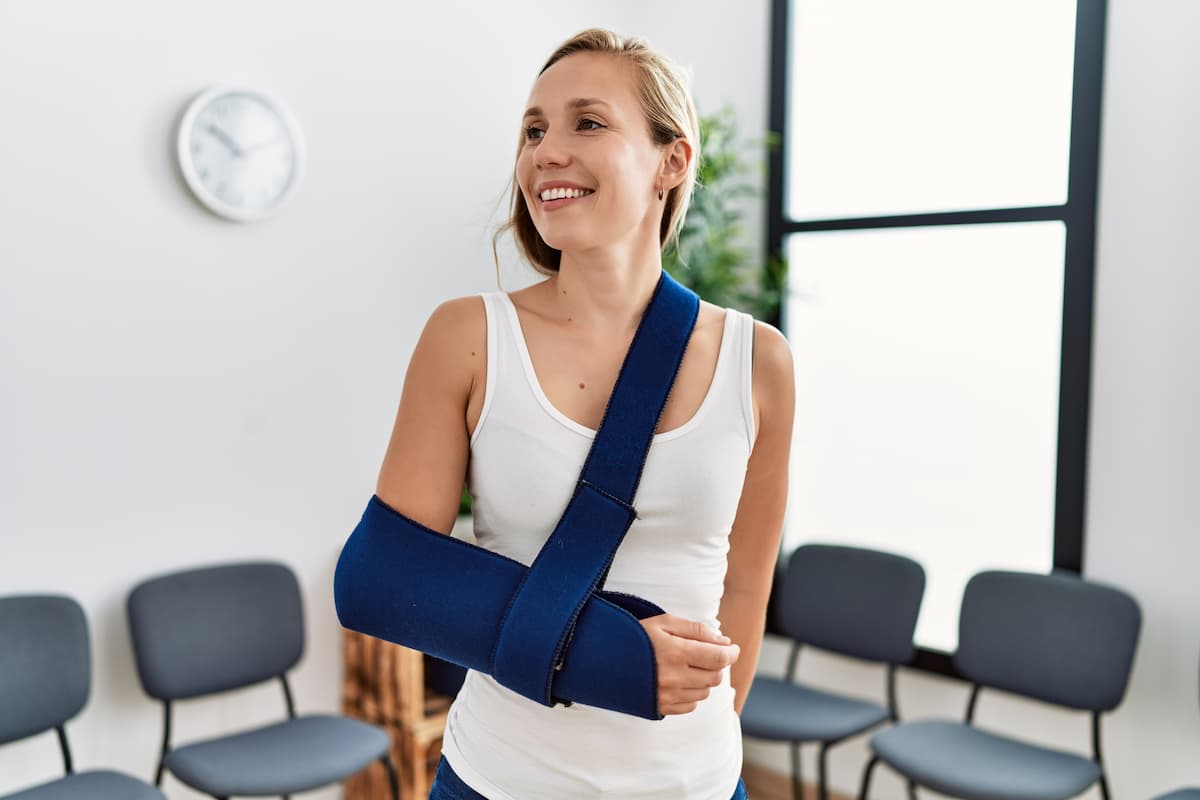
Recovery after arthroscopy
Prior to discharge, Dr Panagopoulos will see you, explain surgery findings and arthroscopic work performed, and hand you the relevant postoperative instructions. You will have a small dressing on top of your shoulder for a few days. Your arm will be in a sling for a period of time that will depend on the underlying problem. An individualised physiotherapy program will be set up for you, based on the type of arthroscopic work performed. After rotator cuff repair, you must stay in a sling for 3-5 weeks, depending on the size of the tear. After stabilization surgery, sling stays for 4 weeks. If you had a procedure for frozen shoulder, you should move the arm as soon as pain allows.
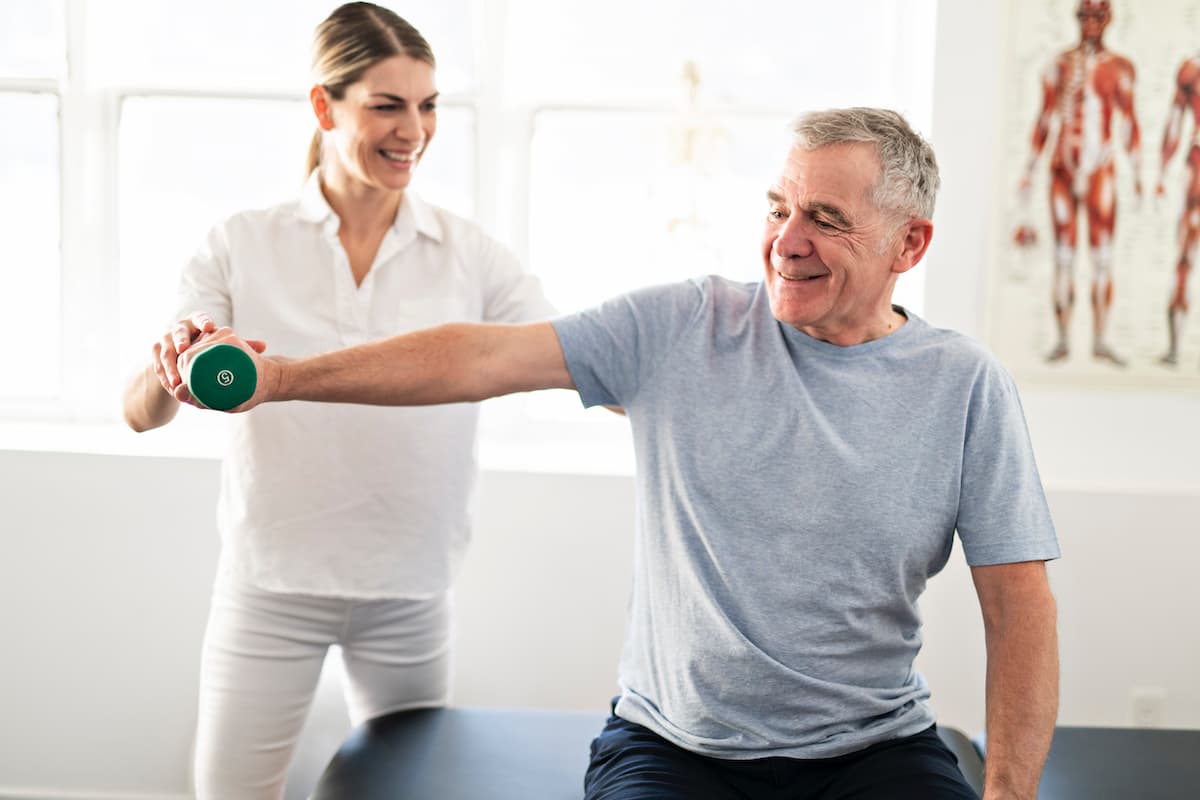
Exercises after shoulder arthroscopy
A specialised physiotherapist will follow our patients postoperatively, initiating an individualised rehabilitation protocol, based on patient needs and underlying pathology addressed. Exercise programs initially include active - assisted, passive & finally active exercises with resistance. Main goal is obtaining a full range of motion and regaining strength, ultimately returning in the pre-injury levels of activity.
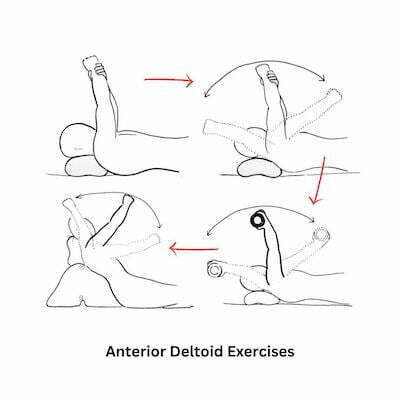
What are the advantages of shoulder arthroscopy?
- No admission is required - you can return home the same day
- Better visibility of the anatomical structures - better accuracy.
- Complications are much less common than with open surgery (infection, bleeding, etc.).
- Postoperative pain is less, as the surrounding tissues have not been disturbed
- Quicker patient recovery
- Quicker return to work - activities of daily living.
- Smaller incisions - better cosmetic result.

What's the cost of shoulder arthroscopy?
The cost of the arthroscopic procedure depends from the complexity of the underlying pathology, but is generally reasonable. Costs are related to the hospital stay, the implants used and the surgical fees. Patients with private insurance are covered based on their individual plans. Part of the cost is covered by the National Health System. Please contact us for further information.
What are the complications of shoulder arthroscopy?
The are risks with every procedure, including bleeding, nerve or vascular damage and stiffness. Arthroscopy risks, however, are minor and in any case less than with the traditional open techniques.
How to prepare for shoulder arthroscopy
- Don't eat or drink for at least 6 hours prior to the procedure - the surgical team will give you clear instructions.
- Follow the instructions you were given related to the management of your medication. As a rule of thumb, blood thinners should be omitted for a few days prior to the procedure, unless there is a specific reason (cardiac issue, recent stent, etc). Don't discontinue your diabetes meds or your beta blockers.
- Sometimes, your doctor needs to touch base with your rheumatologist or endocrinologist, to manage your meds perioperatively.
- Maybe it's time to quit smoking, as nicotine may compromise tissue or bone healing and predispose to anaesthetic complications.
- It is wise to bring loose fitting clothes, to dress up easily after the procedure.
- Have somebody to accompany you home, as you will not be able to drive after the procedure.
- Don't forget your pain med scripts before you leave the hospital.
- If you had regional anaesthesia (nerve block), you arm may be numb for 12-18 hours.
- It is wise to get pain killers before you go to sleep, as the nerve block may wean overnight.
- Feel free to ask your doctor about everything, if you have anything. Everything must be clear.
- Don't forget any important documents prior to discharge, such as sick leave, follow up instructions, home exercise program, etc.
- If you have fever, chills, or any other symptoms please let your doctor know. Better safe than sorry.
- In any doubt, call your surgeon.
FAQs - Frequently Asked Questions
What's shoulder arthroscopy?
Shoulder arthroscopy is a minimally invasive surgical procedure that uses a tiny camera called an arthroscope to examine or repair the tissues inside or around your shoulder.
Shoulder Anatomy
Impingement syndrome - cuff tendonitis
Rotator cuff tears
Calcific Tendonitis
Frozen Shoulder
Shoulder instability
Biceps tendon pathology - SLAP lesions
Early osteoarthritis
ACJ pathology
What are the advantages of shoulder arthroscopy?
– Smaller incisions & less scarring
– Day surgery
– Better visualisation of shoulder pathology - more accurate treatment
– Lower complication rates
– Less postoperative pain
– Quicker recovery
– Quicker return to work and activities
What's recovery like after a shoulder scope?
Recovery time depends on underlying pathology. Physiotherapy is extremely important.
Will I need physiotherapy?
Yes, physiotherapy is very important.
What are the risks?
The are risks with every procedure, including bleeding, nerve or vascular damage and stiffness. Arthroscopy risks, however, are minor and in any case less than with the traditional open techniques.
When can I drive after surgery?
Generally, 4-6 weeks after the procedure.
Find us
Book an appointment with us today
